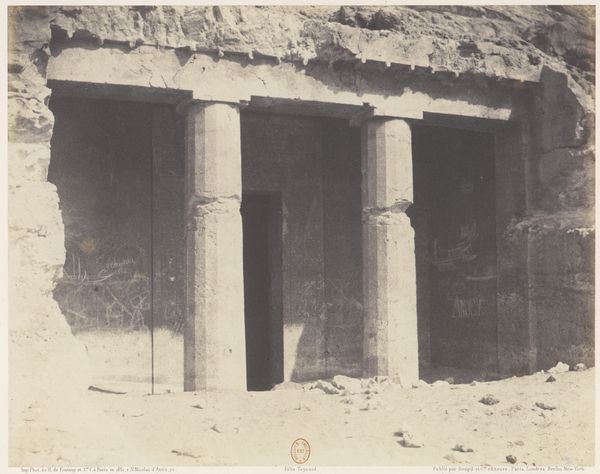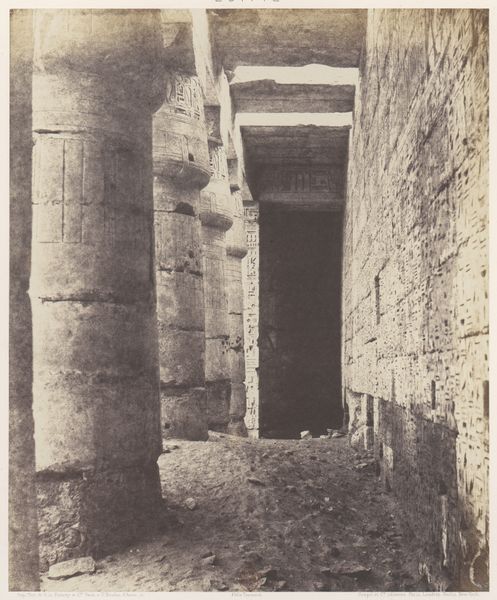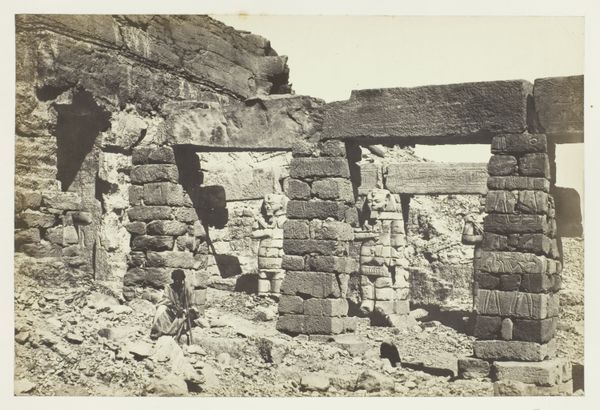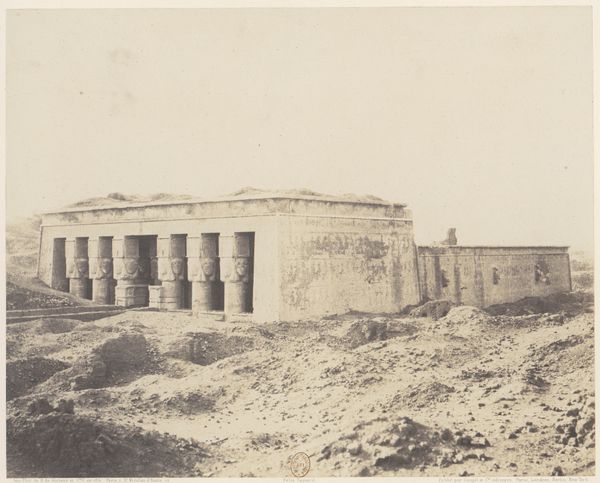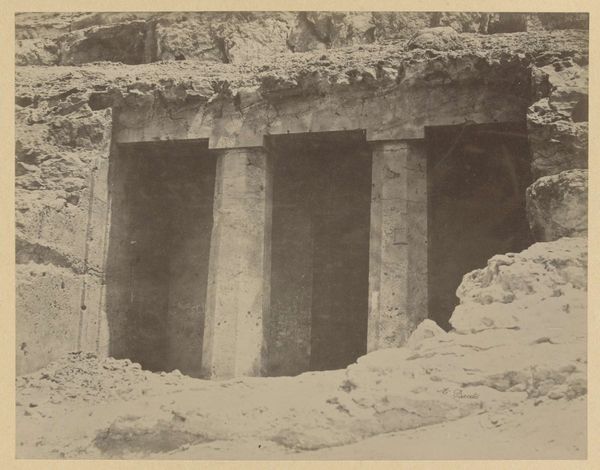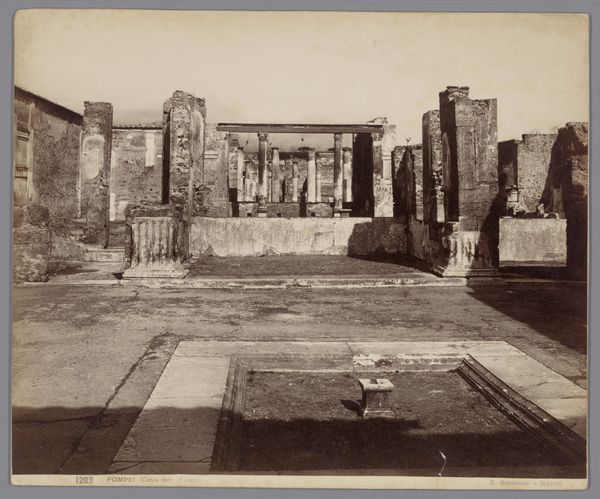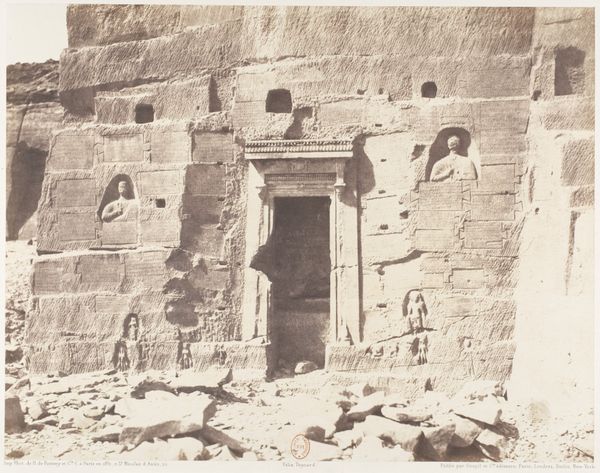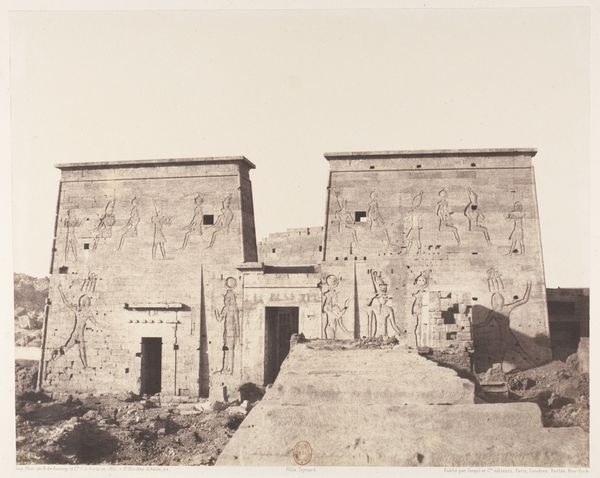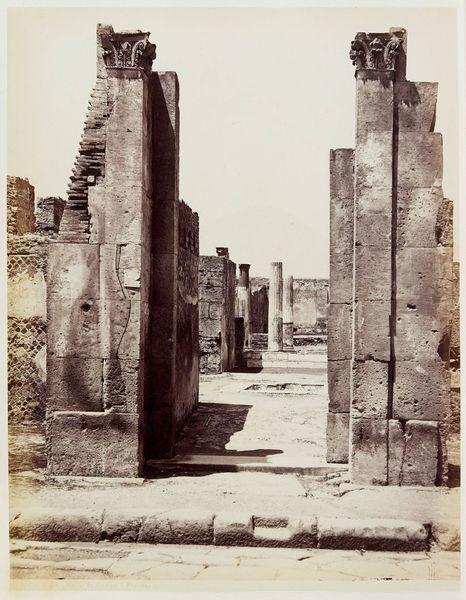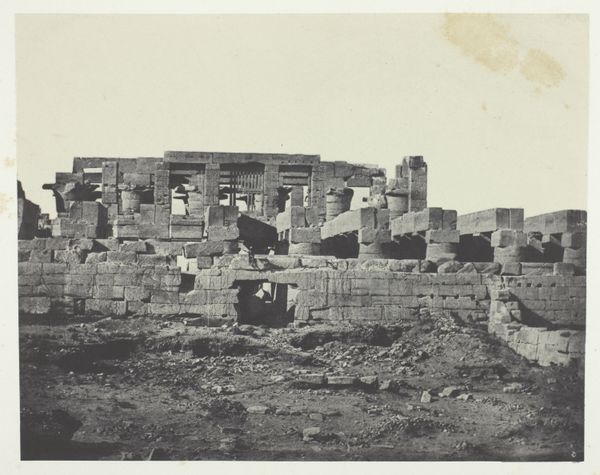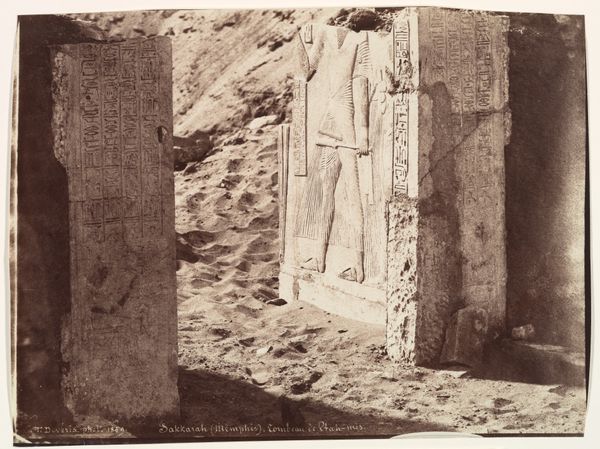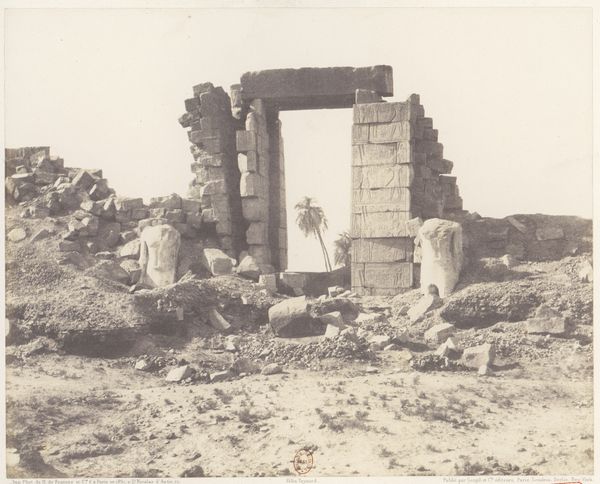
Béni-Haçan, Architecture Hypogéene - Tombeau d'Amoneï 1851 - 1852
0:00
0:00
photography, architecture
#
landscape
#
ancient-egyptian-art
#
photography
#
ancient-mediterranean
#
architecture
Dimensions: 24.5 x 30.3 cm. (9 5/8 x 11 15/16 in.)
Copyright: Public Domain
In the mid-19th century, Félix Teynard created this photograph of the tomb of Amoneï at Béni-Haçan, using a process called calotype. This early photographic technique involved coating paper with silver iodide, making it sensitive to light. Looking at the print, you see the rough texture of the paper and the soft, almost hazy quality of the image. These characteristics are a direct result of the calotype process. Unlike later photographic methods, calotypes were not perfectly sharp. This meant that Teynard, in common with other photographers of the time, was not simply capturing an image, he was also interpreting it. Consider the labor involved: from preparing the chemicals, to carefully exposing the paper in the camera, to developing the print. Photography, in its early days, was as much a craft as it was a science. While it was a modern method of image-making, it demanded an intimate knowledge of materials. So, next time you see an early photograph, think about the artist's hand in shaping the final image. It’s a reminder that even the most technological processes are rooted in material knowledge and human skill.
Comments
No comments
Be the first to comment and join the conversation on the ultimate creative platform.
